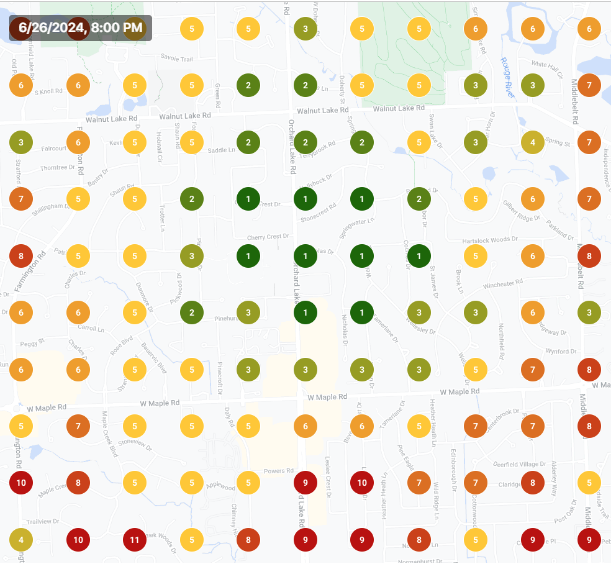Menu Items, A Ranking Factor?
A local restaurant is known for having table side Caesar salad. A chef rolls a cart over and prepares a delicious Caesar salad in front of the table, anchovies and all. Fairly new, they opened in September of 2023 and had 555 reviews (4.7 average rating); out of the 555 reviews 47 mentioned Caesar salad. Out of the 47 reviews, 43 were positive. Despite the popularity they did not rank for the keyword Caesar salad.

I quickly realized that the menu on the Google Business Profile that was fed through an api did not have the keyword Caesar salad. Instead the menu stated Caesar Kitchen. After updating from Caesar Kitchen to Caesar salad on June 6th the rankings did improve. June 7th the rankings were 71 by the 8th we were ranking #1.

You can find reference to local menu items here in the Google API leak. The leak contains mentions of price constraints, quality constraints and local scalable attributes. I personally love adding attributes to a GBP because it directly impacts your visibility for a search intent. For example, the attribute “serves happy hour food” on a GBP signals to Google that the restaurant offers happy hour therefore helping you rank for a users search intent with the words happy hour. For more information on attributes, read my blog on Enhancing Search Visibility in Google Maps with Attributes.

Understanding Ranking Data at Different Times
Despite showing positive results, my ranking data from Local Falcon compared to Whitespark seemed off. With Local Falcon I was ranking in the top 20 for the keyword Caesar Salad but the data on Whitespark showed better ranking positions. At that point I realized that I was not factoring in the open times and scan times of the restaurant and starting scanning later in the evening. This is when I stumbled on the correlation with the popular times graph and rankings.
Popular Times Graph Corelates with Better Rankings
The popular times graph on the GBP helps users understand when a business is typically busier or quieter by showing the average customer visits at different times throughout the day and week. Google states, “Google uses aggregated and anonymized data from users who have opted in to Google Location History”. The graph provides live visit data, visit duration and wait time estimates.

My research shows that if a business is busier at a specific time of day then they outrank their competitors. Below are a series of ranking reports for the keyword Caesar Salad near me. Notice the various times of day and how the rankings get better each hour based on the popular times graph data above. For a deeper dive into Google’s Live popular times data and its “potential for boosting” click here.




Lets compare how two local business rank side by side based on popular times data from their GBP. If I had to guess Crispelli’s will rank better at lunch time and J. Alexander’s will rank better in the evening around 7 PM solely based on the popular times data provided below.

Scan run at 12:39 PM; Crispellil’s for the win!

Scan run at 7:00 PM Crispelli’s for the win.

Scan run at 8:00 PM, J. Alexanders for the win. As popular times for J. Alexanders increases so does its ranking visibility.

Not convinced? Then why is this unverified listing outperforming J. Alexander’s? This manual search was done at peak lunch time.

Follow me on X to keep up with GBP tips and new feature sightings.
